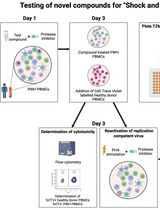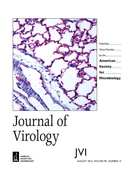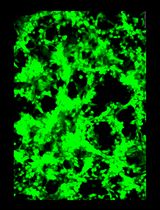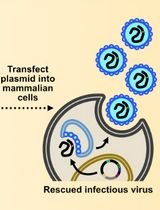- EN - English
- CN - 中文
Determination of Adeno-associated Virus Rep DNA Binding Using Fluorescence Anisotropy
使用荧光各向异性度测定腺相关病毒的Rep DNA结合
发布: 2017年03月20日第7卷第6期 DOI: 10.21769/BioProtoc.2194 浏览次数: 7540
评审: Yannick DebingAnonymous reviewer(s)

相关实验方案

诱导型HIV-1库削减检测(HIVRRA):用于评估外周血单个核细胞中HIV-1潜伏库清除策略毒性与效力的快速敏感方法
Jade Jansen [...] Neeltje A. Kootstra
2025年07月20日 2005 阅读
Abstract
Quantitative measurement of proteins binding to DNA is a requisite to fully characterize the structural determinants of complex formation necessary to understand the DNA transactions that regulate cellular processes. Here we describe a detailed protocol to measure binding affinity of the adeno-associated virus (AAV) Rep68 protein for the integration site AAVS1 using fluorescent anisotropy. This protocol can be used to measure the binding constants of any DNA binding protein provided the substrate DNA is fluorescently labeled.
Keywords: Adeno-associated virus (腺相关病毒)Background
Fluorescence polarization anisotropy has become one of the most popular methods to measure the interaction of proteins with a large variety of ligands including small molecules, nucleic acids, peptides and other proteins. The method is quick, inexpensive and can be modified to be used in plate readers equipped with fluorescence detectors. The technique is based on the principle that when a fluorescent molecule is excited with plane polarized light, the emitted light remains polarized in the same plane if the molecule is stationary or if it rotates slowly. In contrast, if the molecule rotates rapidly (due to small size), the light is emitted in a different plane. These changes can be quantified by the normalized differences in parallel and perpendicular intensities. Polarization is defined as P = (I= - I⊥)/(I= + I⊥), where I= is the parallel intensity and I⊥ is the perpendicular intensity. An alternative way is to define the anisotropy, A = (I= - I⊥)/(I= + 2I⊥). Both parameters can be used interchangeably to describe the changes in polarization. Thus, when a small fluorescent DNA molecule binds a protein, the larger complex will rotate more slowly than the DNA molecule, changing the plane of the polarized light and increasing the anisotropy value. We have used this technique to measure the binding affinity of AAV Rep68 for different DNA substrates (Yoon-Robarts et al., 2004; Musayev et al., 2015; Bardelli et al., 2016). The non-structural AAV Rep proteins carry out most of the DNA transactions that are required to complete the virus life cycle. These include DNA replication, transcriptional regulation, site-specific integration and packaging of DNA into preformed capsids (Im and Muzyczka, 1990; Weitzman et al., 1994; Wonderling et al., 1995). The large AAV Rep proteins (Rep78/Rep68) contain an N-terminal origin binding domain (OBD) that specifically binds the Rep binding sites (RBS) and displays nuclease activity (Hickman et al., 2004; Musayev et al., 2015). The RBS sites consist of two or more 5’-GCTC-3’ repeats and are found at the viral origin of replication, in several promoters and at the AAVS1 integration site (Weitzman et al., 1994; McCarty et al., 1994). In addition, a C-terminus SF3 helicase domain is required for high affinity binding and DNA unwinding (James et al., 2003; Mansilla-Soto et al., 2009).The protocol described here can be modified to fit any protein-DNA system or any other instrument such as plate readers.
Materials and Reagents
- Pipette tips
- 15 ml conical tubes (USA scientific, catalog number: 1475-1611 )
- Black 1.5 ml Eppendorf tubes (Argos Technologies, catalog number: T7456-001 )
- 16 gauge needle (BD, catalog number: 305197 )
- Fluorescein labeled AAVS1 sense DNA strand with the following sequence:
5’-TGGCGGCGGTTGGGGCTCGGCGCTCGCTCGCTCGCTGGGCG-3’ - AAVS1 anti-sense strand with the sequence: 5’-CGCCCAGCGAGCGAGCGA GCGCCGAGCCCCAACCGCCGCCA-3’
Note: DNA can be synthesized using any synthesis facility such as IDT services at a 100 nanomole scale. The sense strand can be labeled at the 5’ end with fluorescein (6-FAM). - Purified recombinant AAV Rep68 protein was expressed in E.coli and purified using Ni-NTA affinity column followed by a gel filtration column as described previously (Musayev et al., 2015)
- Sodium hydroxide (NaOH)
- Sodium chloride (NaCl) (Fisher Scientific, catalog number: BP358 )
- 2-Amino-2-(hydroxymethyl)propane-1,3-diol (Tris) (Sigma-Aldrich, catalog number: T1503 )
- Ethylendiaminetetraacetic acid (EDTA) (Gold Bio, catalog number: E-210-1 )
- 4-(2-hydroxyethyl)-1-piperazineethanesulfonic acid (HEPES) (Gold Bio, catalog number: H-401-500 )
- Tris(2-carboxyethyl)phosphine (TCEP) (Gold Bio, catalog number: TECP )
- Double distilled water
- Q1 buffer (see Recipes)
- Q2 buffer (see Recipes)
- TES buffer (see Recipes)
- Binding buffer (see Recipes)
Equipment
- Pipettes
- MonoQ anion-exchange column (GE Healthcare, catalog number: 17-5166-01 )
- HiTrap 5 ml desalting column (GE Healthcare, catalog number: 11-0003-29 )
- GE Healthcare AKTA purifier
- Labconco Freezone 2/5 Benchtop lyophilizer
- Thermo Scientific NanoDrop ND-2000c spectrophotometer (Thermo Fisher Scientific, model: NanoDropTM 2000/2000c )
- Denville IncuBlock heating block
- ISS PC1 fluorimeter (ISS, model: PC1TM )
Software
- Microsoft Excel
- GraphPad Prism 7TM
- Vinci Instrument control and data acquisition software from ISS
Procedure
文章信息
版权信息
© 2017 The Authors; exclusive licensee Bio-protocol LLC.
如何引用
Zarate-Perez, F., Santosh, V., Bardelli, M., Agundez, L., Linden, R. M., Henckaerts, E. and Escalante, C. R. (2017). Determination of Adeno-associated Virus Rep DNA Binding Using Fluorescence Anisotropy. Bio-protocol 7(6): e2194. DOI: 10.21769/BioProtoc.2194.
分类
微生物学 > 微生物-宿主相互作用 > 病毒
生物化学 > 蛋白质 > 活性
分子生物学 > 蛋白质 > 蛋白质-DNA结合
您对这篇实验方法有问题吗?
在此处发布您的问题,我们将邀请本文作者来回答。同时,我们会将您的问题发布到Bio-protocol Exchange,以便寻求社区成员的帮助。
提问指南
+ 问题描述
写下详细的问题描述,包括所有有助于他人回答您问题的信息(例如实验过程、条件和相关图像等)。
Share
Bluesky
X
Copy link











